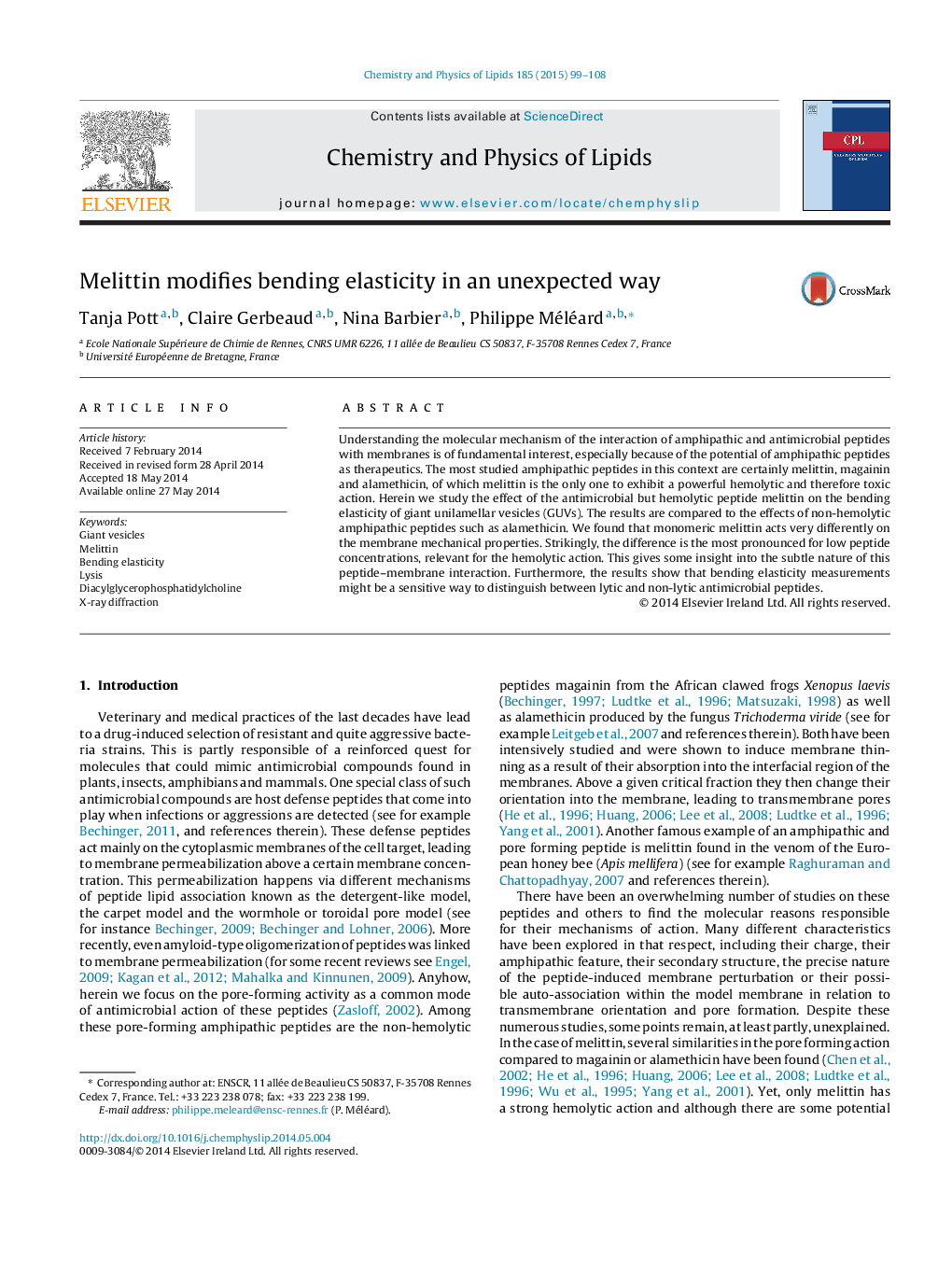| Article ID | Journal | Published Year | Pages | File Type |
|---|---|---|---|---|
| 1253301 | Chemistry and Physics of Lipids | 2015 | 10 Pages |
•Melittin induces a strong bending elasticity reduction at high bound peptide.•At low bound peptide, no noticeable bending elasticity effect was found.•These results are opposite to those for pore forming peptides like alamethicin.
Understanding the molecular mechanism of the interaction of amphipathic and antimicrobial peptides with membranes is of fundamental interest, especially because of the potential of amphipathic peptides as therapeutics. The most studied amphipathic peptides in this context are certainly melittin, magainin and alamethicin, of which melittin is the only one to exhibit a powerful hemolytic and therefore toxic action. Herein we study the effect of the antimicrobial but hemolytic peptide melittin on the bending elasticity of giant unilamellar vesicles (GUVs). The results are compared to the effects of non-hemolytic amphipathic peptides such as alamethicin. We found that monomeric melittin acts very differently on the membrane mechanical properties. Strikingly, the difference is the most pronounced for low peptide concentrations, relevant for the hemolytic action. This gives some insight into the subtle nature of this peptide–membrane interaction. Furthermore, the results show that bending elasticity measurements might be a sensitive way to distinguish between lytic and non-lytic antimicrobial peptides.
Graphical abstractFigure optionsDownload full-size imageDownload as PowerPoint slide
